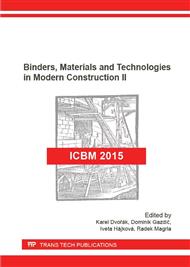p.219
p.224
p.229
p.234
p.239
p.244
p.249
p.255
p.261
Identification of Thermal Characteristics of Selected Refractory Composites under High Temperature
Abstract:
High-temperature behaviour of refractory composites needs proper experimental and theoretical analysis, coming from classical thermodynamics. The dependence of usual thermal characteristics, as the thermal conductivity and thermal capacity, on temperature, cannot be neglected in any computational simulation, thus the experimental identification of their effective values is required. Whereas valid technical standards related to the hot-wire measurement technique enables us only certain approximate evaluation of thermal diffusivity, the very similar experimental configuration, supplied by the more advanced physical, mathematical and computational analysis, offers a possibility of reliable simultaneous identification of more characteristics. The crucial application is to the selection of appropriate silicate materials for the design of high-temperature storage of solar energy where both high thermal conductivity and thermal capacity are required. The first results refer to certain magnesite-based products as the good choice.
Info:
Periodical:
Pages:
261-265
Citation:
Online since:
August 2016
Authors:
Price:
Сopyright:
© 2016 Trans Tech Publications Ltd. All Rights Reserved
Share:
Citation:


